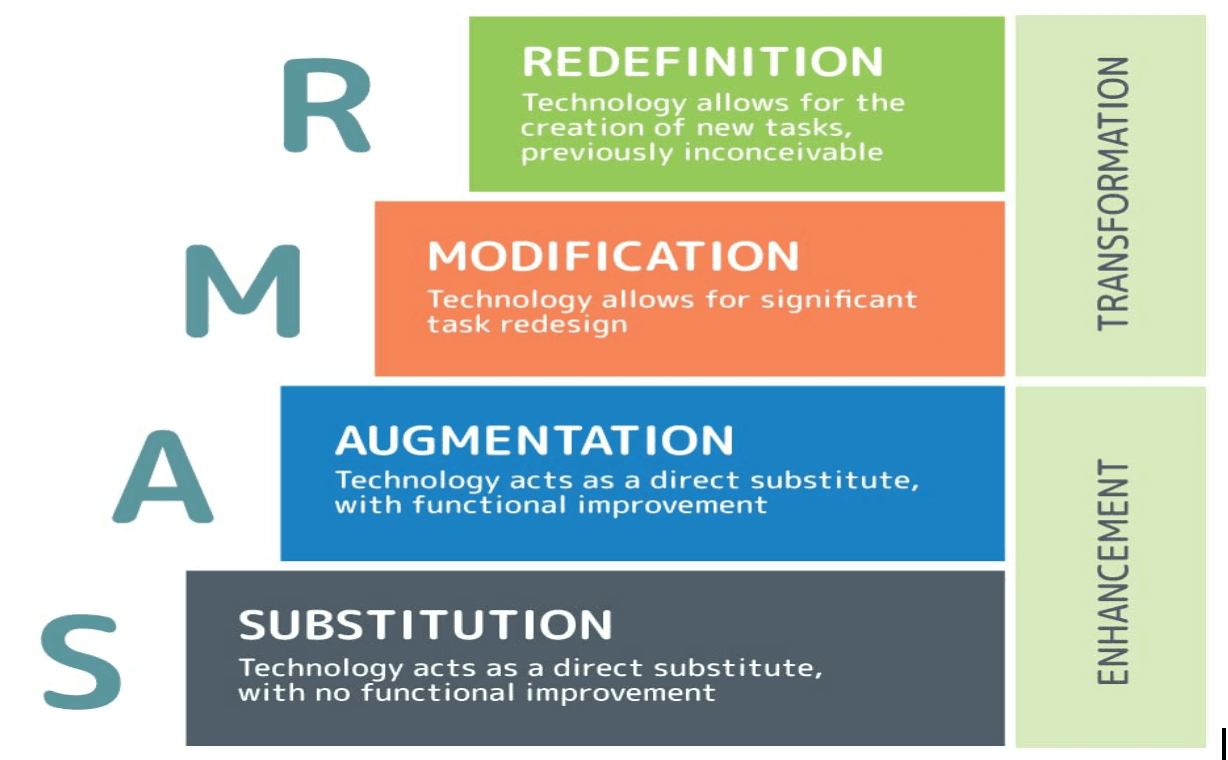
Empowering Educators: The Importance of ICT Integration in Teaching and Learning
Uncommon.org’s Teacher Training Program empowers educators with the skills and knowledge to seamlessly integrate ICT into their teaching. To date we have trained 20 teachers from Mbare and 30 from Warren Park 2 Primary School, providing ongoing support through computers, internet access, and instructional materials.
The ICT Integration Guide is one of the support materials that focuses on effectively incorporating technology into teaching and learning, using the SAMR model as a framework.

The guide categorizes technology use into four stages:
- Substitution – Replacing traditional tools with digital alternatives for convenience (e.g., typing instead of handwriting, digital whiteboards).
- Augmentation – Enhancing learning with technology (e.g., using multimedia presentations, online research, gamified learning).
- Modification – Transforming tasks by enabling collaboration and interactive activities (e.g., creating podcasts, video presentations, using AI for research).
- Redefinition – Creating new learning experiences beyond traditional methods (e.g., global student collaboration, publishing work online, coding).
The guide emphasizes that technology should support learning rather than be used for its own sake, and highlights the potential of AI to improve education
By incorporating ICT into their classrooms, teachers trained by Uncommon.org can improve student outcomes, foster innovation, and prepare learners for a digital future. Technology has become not just an add-on but a transformational force in education. In the recently held Teacher Training workshop held from the 28th -30th of January, one of the key topics that we delved into was the integration of technology into teaching and learning. Through the Teacher Training Program, educators gain hands-on experience with:
- Digital tools & AI for lesson planning and assessment
- Collaborative learning platforms to foster student engagement
- Coding to develop programming skills
ICT integration skills are important for teachers because they help them use technology effectively in the classroom, rather than just for the sake of using it. Here’s why it matters:
1. Enhances Student Learning
- Technology can make learning more engaging and interactive (e.g., gamification, multimedia content). This allows students to explore topics independently, improving critical thinking and problem-solving skills.
2. Supports Diverse Learning Needs
- Digital tools cater to different learning styles (visual, auditory, kinesthetic).
- Assistive technology helps students with special needs participate more fully.
3. Encourages Collaboration & Creativity
- Tools like Google Docs and EdTech platforms allow real-time collaboration among students.
- Creative projects (videos, podcasts, coding) encourage innovation and self-expression.
4. Prepares Students for the Future
- Digital literacy is an essential skill for 21st-century careers with students gaining experience with AI, coding, and online communication, preparing them for tech-driven workplaces.
5. Improves Teaching Efficiency
- AI and digital tools reduce teacher workload (e.g., automated grading,and online quizzes), providing opportunities for teachers to access a wealth of resources and real-time data to adjust their teaching strategies.
6. Expands Learning Beyond the Classroom
- Virtual collaboration connects students to global learning communities.
- Publishing work online fosters a sense of ownership and accountability in students.
conclusion
Integrating ICT empowers teachers to create dynamic, personalized, and future-ready learning experiences while making their work more efficient and impactful.







